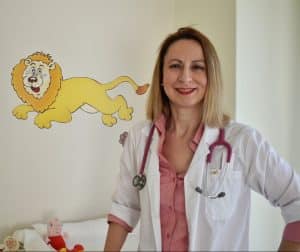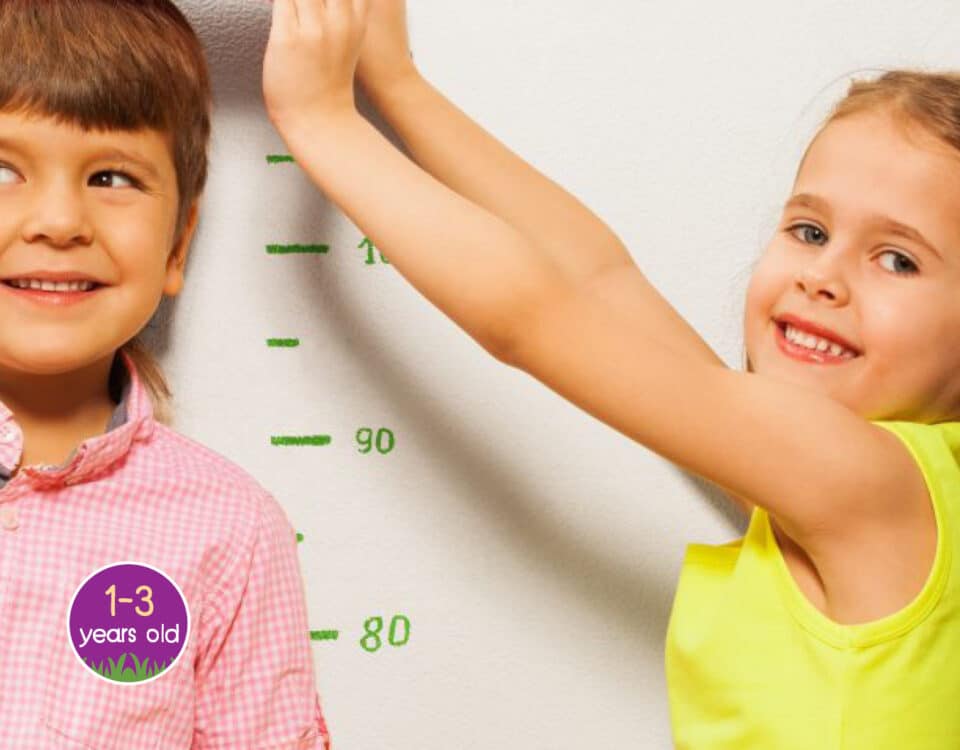
Eating in front of the TV screen – pros and cons
September 30, 2020
What do you do when your child does not drink its milk?
September 30, 2020Psychomotor growth in children 1-3 years of age


It is expected that parents want to know more about their children’s psychomotor progress. But they often fall in this trap of comparing their children’s skills with other children of their age. So when are there serious concerns and what are the developmental key milestones for children 1 to 3 years of age?
What does psychomotor growth depend on?
Heredity combined with environmental conditions within which a child is being raised are the main factors. Diet, physical exercise, rest and, most importantly, safety, protection, affection and creative activities provided by the parents contribute effectively towards the growth and development of kids’ functional skills. The ability to learn new experiences through play, the encouragement of the child’s personality, the strengthening of mutual respect and independence are all positively affecting the growth of children.
What are the characteristics of pathological psychomotor development?
The child may display slow and stable progress but outside the normal range for its age. With age, the difference between normal and pathological growth becomes clearer. Pathological development may be detected on a certain category or all categories of skills. Beyond the attainment of skills, it is also important to look at their quality. For example, a child may have succeeded in the developmental milestone of speech but demonstrate unskillfulness when interacting with others..
Is there a differentiation in the attainment of developmental milestones from child to child?
Each child develops at their own pace. More specifically, for children who have been born prematurely, their developmental age is assessed by taking into account the expected birth date. The difference between chronological and corrected age is offset at the 2 years of age. The pace of attainment of developmental milestones varies, with multiple variations of the normal. The larger the distance from the average, the more likely to have retardation during development.
First year developmental milestones:
A one-year old child is able to wave “bye-bye”, makes and copies hand movements to songs, points to what it wants (not with crying), drinks with a glass, says “mom-dad” by actually meaning it, understands many words, responds when it hears its name, holds in its hand 2 cubes and hits them, uses thumb and forefinger to pick up objects, starts throwing objects on the floor, finds support by itself and gets in standing position, walks by supporting itself on furniture and when someone is holding their hand.
Second year developmental milestones:
A two year old child has a better understanding of their independence, says a few words here and there (15-18 months), starts using 2 or more words to make up simple phrases, uses their imagination for play, points to at least 3 parts of their body, is able to build towers of six blocks, develops uncontrolled scribbles, walks without help, pushes back their toys while they are walking, goes up and down the stairs by holding the railings (2 legs on each step).
Third year developmental milestones:
For a three year old child it is harder to part with their parents, it can wash and wipe its hands, copy people it is playing with, say their name, their sex and their age, make up sentences out of 4 words, match two similar things, string beads, copy a circle, stand on one leg for 1 second, ride on a 3-wheels bike, go up the stairs with the support of railings (1 leg on each step), run fast.
Many of the cases involving the parents’ concern actually have to do with variations of the normal. The role of the pediatrician is to listen to these concerns and decide if the child has attained the skills expected for its age and development stage. Depending on the case, the doctor may recommend introducing a period of monitoring or refer the child for further assessment in order to determine the cause and conclude on the best way to provide support.
Indicative bibliography
- Dworkin PH. British and American reccomandations for developmental moitoring: the role of surveillance. Pediatrics 1989; 84:1000
- Hall DMB, Hill P, Elliman D 1999 The child surveillance handbook, 2ndRadcliffe Medical Press, Oxford. A practical guide to child development and surveillance
- Steven Shelov, Robert E. Hannermann, 2004 Caring for your baby and young child: Birth to age 5, American Academy of Pediatrics
- Centers for Disease Control and Prevention. Developmental Disabilities. Available at: https://www.cdc.gov/ncbddd/developmentaldisabilities/ (Accessed on September 16, 2017).

|
Pinelopi Loukeri Pediatrician – Neonatologist Breastfeeding advisor Formerly at the A’ University Clinic of “Agia Sofia” Hospital |
[/su_table]






